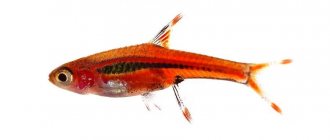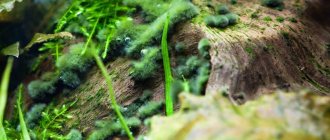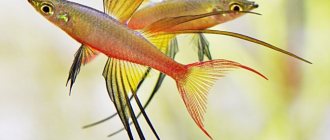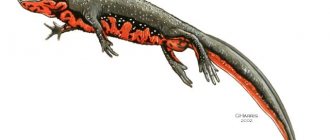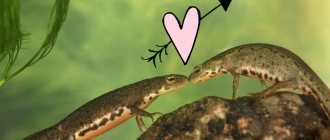An aquarium is an excellent decoration for your home interior, where various fish and animals live in artificial conditions. Of course, most often its inhabitants are fish: lalius, barbs, guppies and others. But exotic lovers prefer to keep more extravagant pets, one of which is the Spanish newt.
Spanish newt - an exotic inhabitant of aquariums
Description
The Spanish newt is an amphibian from the genus of small newts . In appearance it can easily be confused with the filamentous and ordinary newt.
Females are noticeably larger than males; their body length can reach up to 10 cm, while males do not outgrow 8 cm.
The name of the amphibian is justified by the needle-like protrusions covering the ends of the ribs: this is a means of protection against larger predators.
The body outline of the Spanish newt is square in cross section. The tail is long, equal to the body or slightly longer, flattened on the sides. The skin, which is smooth and shiny during the aquatic phase, becomes rough and tough when living on land.
Color options:
- olive;
- grey-black;
- brown;
- yellow.
Females are darker than males; Another gender difference is the length of the paws: in females they are noticeably shorter.
The color of the amphibian's abdomen is much lighter than the main color and can be pink, yellow or light orange.
Dark spots of arbitrary shape are often noticeable on the back, and a silver stripe is visible in males during spawning. A sign of the newt's age will be lighter skin on the sides of adult individuals .
Novice aquarists sometimes mistakenly believe that the axolotl and newt are the same animal, but this is not the case .
The axolotl is an Ambystoma larva that reaches sexual maturity without changes in appearance (that is, it is able to reproduce without changing its larval form to an adult one).
Where does the spiny newt live?
Photo: Spine newt in Spain
The ribbed newt's homeland is Portugal (western part), Spain (southwestern part) and Morocco (northern part). Newts live mainly in bodies of water with cool, fresh water. Rarely found in the mountains of Granada (Sierra di Loggia) at an altitude of up to 1200 m. They can also be found at a depth of 60-70 m in caves near Bouhot or Ben Slymane in Morocco. The Spanish spiny newt lives at a depth of up to 1 m in low-flowing water bodies: in ditches, ponds, lakes.
Interesting fact: Not long ago, Swedish biologists deciphered the genome of the spiny newt. As a result of the research, it was found that the animal DNA code contains several times more genetic information than the human DNA code. In addition, newts have the largest regenerative repertoire of any four-legged animal. They can grow and remodel their tails, limbs, jaws, heart muscle, and even brain cells. The next stage of the research will be a detailed study of how brain cells regenerate and how exactly stem cells are involved in the regenerative processes of adult newts.
The purity of water is not important for these amphibians. They also do well in slightly salted waters. The Spanish newt can lead both aquatic and terrestrial lifestyles, but prefers the first, so you rarely see it on land. Spine newts usually live in the same body of water for several years, or even their entire lives. If for some reason their habitat is no longer suitable for them, they migrate in search of a new home, and do this during rain to avoid dehydration. In summer, during intense heat, during very dry periods, amphibians can leave bodies of water and hide in deep burrows and crevices between stones. At this time, newts are very difficult to detect, so they come to the surface at night and only to hunt.
Varieties
There are several varieties - they differ in habitat, external characteristics and character.
Ordinary
One of the smallest found in Russia. The length of the body including the tail does not exceed 9 cm. Modest color in a brown tones (the colors of females are lighter than those of males).
On the body of gentlemen there are dark, uneven spots; on ladies they are weakly expressed or completely absent. There are longitudinal dark stripes on the head; The ones that stand out the most are those that frame the eyes.
Comb
One of the largest representatives of this group of amphibians. Can grow up to 18 cm . During spawning, the male has a jagged crest on his back, running from the top of his head to the base of his tail.
The crested newt is distinguished from the ordinary newt by the absence of a longitudinal stripe on the top of its head. The spots are weakly expressed, since the color of the back is quite dark, but the belly is light yellow or light orange . Light small spots are clearly visible on the sides.
Spiny
Spanish newts are relatively small amphibians. The length of their body does not exceed 10 cm. The color is olive or brownish, but you can also find a rare individual - a newt without pigmentation, that is, an albino .
View this post on Instagram
Publication from

